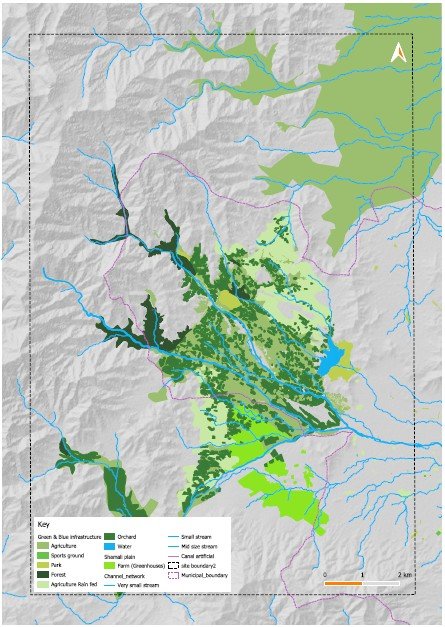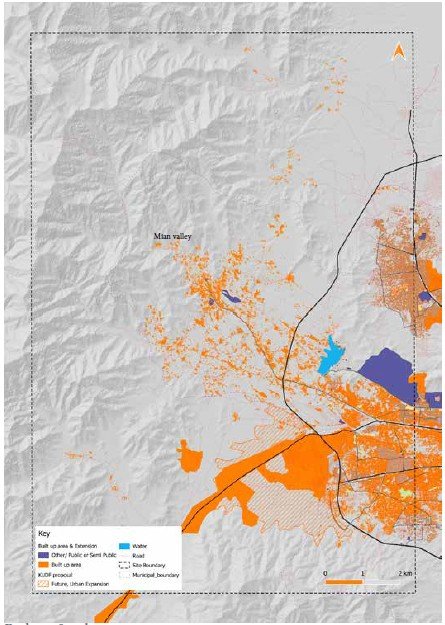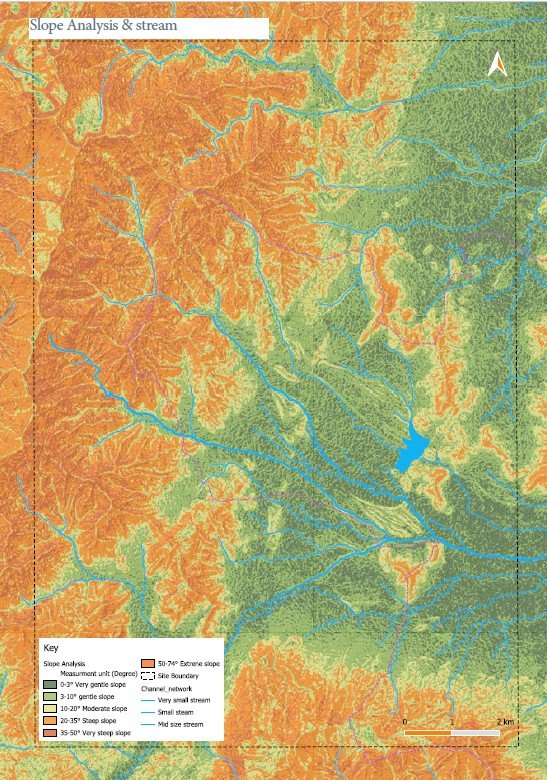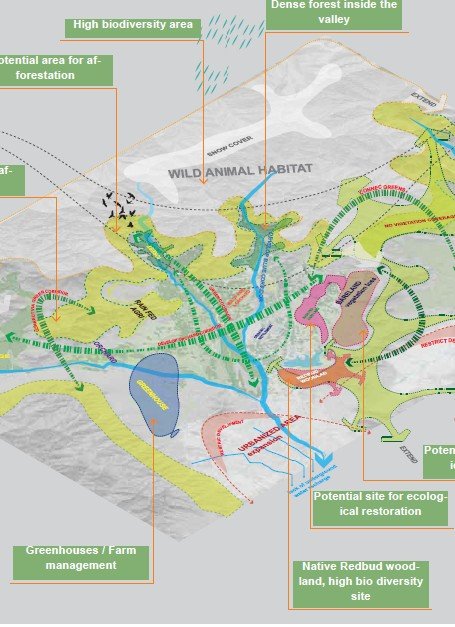A Call for Ecological Restoration in the Heart of Afghanistan
Kabul, Afghanistan’s bustling capital, stands in stark contrast to the serene beauty of the Paghman Landscape just beyond its borders. This vital natural area, a source of ecological and cultural richness, is facing unprecedented threats from urbanization, unsustainable practices, and the looming shadow of climate change. Adding to these pressures, proposed developments, including the Kabul Urban Development Framework, pose a significant threat to the Paghman conservation area.
Paghman: An Ecological and Cultural Oasis Under Siege
Paghman is far more than just a scenic backdrop to Kabul; it is an integral part of the city’s lifeblood. Its diverse ecosystem, teeming with unique flora and fauna, provides invaluable services, from purifying the air and water to offering fertile ground for agriculture. The iconic redbud woodland, a vibrant tapestry of color, stands as a testament to the area’s ecological richness. The rugged Hindu Kush mountains, which embrace Paghman, provide a haven for a variety of wildlife, including foxes, wolves, wild cats, and the majestic Markhor (screw-horn goat). The Paghman stream, a lifeline for the region, shelters the critically endangered Afghanon salamander, while the Qargha Dam, nestled amidst the redbud woodland, offers a vital water source. Beyond its ecological significance, Paghman holds deep cultural value, with historical sites like Taq e Zafar and the Paghman Palaces whispering tales of Afghanistan’s rich past. (Ahmadzai, n.d.)However, this invaluable landscape is under siege. The relentless march of urbanization, coupled with unsustainable grazing practices and the exacerbating effects of climate change, has created a perfect storm of threats. Habitat fragmentation, driven by expanding human settlements and infrastructure, disrupts the delicate balance of the ecosystem, isolating populations of plants and animals and hindering their ability to thrive. Overgrazing, a consequence of unsustainable livestock management, strips the land of its protective vegetation, leaving it vulnerable to erosion and degradation. Climate change, with its unpredictable weather patterns and increasing temperatures, further stresses the already fragile ecosystem, pushing it closer to the brink. The redbud woodland, a symbol of Paghman’s ecological health, has suffered significant decline, its vibrant hues fading as its territory shrinks. The Afghanon salamander, a unique inhabitant of the Paghman stream, faces the grim prospect of extinction, its survival hanging in the balance.
The proposed KUDF developments, including the new ring road and promoted development between the ring road and Qargha Dam, further exacerbate these threats. These projects risk fragmenting crucial wildlife habitats, disrupting ecological connectivity, and further degrading the environment. The ring road, while intended to improve transportation, could bisect critical migration routes and isolate animal populations. The development between the ring road and Qargha Dam could encroach upon vital green spaces, further reducing the available habitat for Paghman’s unique flora and fauna. These developments not only pose immediate threats but also restrict future opportunities for restoration, limiting the potential to rebuild and reconnect fragmented ecosystems.
The Green Audit: A Deep Dive into Paghman’s Ecological Health
A comprehensive green audit was undertaken to assess the health of the Paghman landscape. This meticulous examination involved a thorough analysis of the existing landscape components, mapping the distribution of vegetation, water sources, and areas of ecological significance. The audit also evaluated the ecological strengths and weaknesses of the area, identifying key threats such as erosion, deforestation, and habitat fragmentation. The findings of the audit paint a stark picture of the challenges facing Paghman, but also offer a glimmer of hope by highlighting opportunities for intervention and restoration
A Vision for Restoration: Rebuilding a Resilient Paghman
Based on the insights gained from the green audit, a strategic framework for the restoration of Paghman has been developed. This framework envisions a future where the landscape’s ecological integrity is restored, its biodiversity enhanced, and its resilience to future threats strengthened. The vision is not merely about preserving what remains, but about actively rebuilding and revitalizing the ecosystem, creating a sustainable balance between human needs and environmental protection.
Strategies for Change: A Roadmap to a Sustainable Future
- Preservation of Rocky Mountains and Wild Animal Habitat:
- Strict Restriction of Human Activities: Designate ecologically sensitive areas within the rocky mountains as protected zones, strictly limiting human intervention to minimize disturbance to wildlife and their habitats.
- Soil Stabilization: Implement measures to stabilize soil on steep slopes, which are prone to erosion, by planting native trees such as wild almond and pistachio. These trees will help bind the soil, preventing landslides and promoting vegetation growth.
- Management by Kabul Municipality: Transfer the management of the preservation area to the Kabul Municipality to ensure effective oversight and enforcement of protective measures. This will help streamline decision-making and resource allocation for conservation efforts.
- Afghanon Salamander Protection: Implement short-term restrictions on activities in the vicinity of the Afghanon salamander’s spotted location to protect this critically endangered species. In the long term, restore all three streams in the area to create suitable salamander habitats, ensuring their survival.
- Conservation and Restoration of Forests:
- Balancing Environmental Protection and Recreation: Develop a balanced approach that allows for recreational activities within the main valley while prioritizing environmental protection and enhancing the ecological and functional aspects of the forest. This will involve zoning areas for different uses and implementing sustainable tourism practices.
- Connecting Fragmented Forests: Establish ecological corridors to connect fragmented forest patches, allowing for the movement of wildlife and promoting genetic exchange between populations. This will enhance the overall biodiversity and resilience of the forest ecosystem.
- Balancing Environmental Protection and Human Activities: Implement strategies to balance environmental protection with the needs of local communities who depend on the forest resources. This will involve community engagement and participatory management approaches to ensure sustainable use of forest resources.
- Conservation of Agricultural Land:
- Conservation of Shamali Plain: Implement measures to conserve the fertile agricultural land in the Shamali plain, protecting it from urban encroachment and unsustainable farming practices. This will involve land-use planning and promoting sustainable agricultural techniques.
- Conservation of Paghman Plain: Conserve the agricultural land in the Paghman plain and promote mixed cropping systems to enhance soil fertility and reduce the reliance on monoculture farming. This will also improve the resilience of agricultural systems to pests and diseases.
- Traditional Water Trench System: Implement or restore traditional water trench systems for efficient irrigation, reducing water waste and promoting sustainable water management practices. This will help conserve water resources and ensure the long-term viability of agriculture in the region.
- Heat-Tolerant Orchards: Promote the cultivation of heat-tolerant orchard species in rain-fed agricultural areas to prevent soil loss and reduce the unsustainable extraction of groundwater. This will help adapt to the changing climate and ensure the sustainability of agriculture in the face of increasing temperatures.
- Restoration of Ecological Corridors:
- Restoration of Paghman River Streams: Restore the streams of the Paghman River and create riparian zones along their banks to enhance biodiversity and improve water quality. Riparian zones act as buffers, filtering pollutants and providing habitat for a variety of species.
- Restoration of Qargha Dam Stream: Restore the stream flowing into the Qargha Dam and create riparian zones to ensure that wildlife has access to water during drought periods. This will enhance the resilience of the ecosystem to climate change impacts.
- Creation of Wetlands: Create wetlands along the main stream of Paghman to enhance biodiversity, improve water quality, and provide habitat for a variety of aquatic species. Wetlands act as natural sponges, absorbing excess water and reducing the risk of floods.
- Restoration and Enhancement of Degraded Areas:
- Restoration of Military Site: Restore the military site near the Redbud woodland area by promoting the growth of redbud trees and shrubs. This will help reclaim degraded land and expand the redbud woodland habitat.
- Afforestation of Hills: Promote afforestation on developed hills, focusing development efforts to the east of Kabul city. This will help compensate for habitat loss due to development and enhance the green cover in the region.
- Afforestation of Qargha Mountains: Promote afforestation in the Qargha Mountains, focusing on redbud woodland species, to expand this valuable habitat and enhance the scenic beauty of the area.
- Enhancement of Qargha Mountains for Recreation: Enhance the Qargha Mountains for aesthetic and recreational opportunities, providing sustainable tourism options while protecting the ecological integrity of the area.
- Restoration of Protected Area: Restore the protected area by extending the redbud woodland and restricting the proposed development by KUDF. This will safeguard critical habitat and prevent further fragmentation of the ecosystem.
- Restoration of Rangeland:
- Sustainable Grazing Practices: Implement sustainable grazing practices to prevent overgrazing and allow for the regeneration of rangeland.





